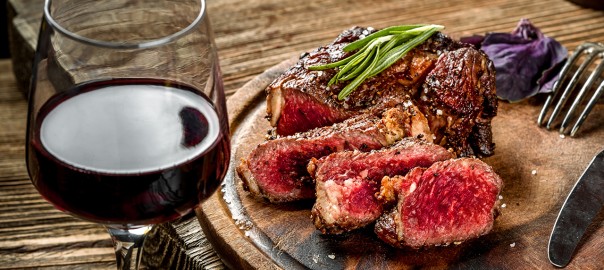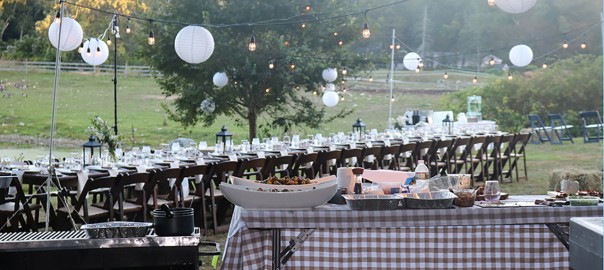Why bring bacon and filet mignon together?
Of course, it makes sense. It seems like a question that does not need to be asked by any sane person. Crispy bacon and a delectable, tender steak together?
But, have you ever paused, mid-savory bite, and just momentarily think, who thought of THIS?
Believe it or not, there is a pretty good reason why it’s a good idea to wrap a filet in bacon.
Why do we wrap filet mignon in bacon?
Filet mignon comes from one of the least fatty parts of a cow, which is the reason it is so tender. However, this can also be a reason why some folks don’t like filets as much as, say, a well-marbled ribeye. The lack of fat also means a lack of some of the flavors that we — as a steakhouse-packing public — have come to love.
Wrapping a filet in bacon allows for some of the savory, smokey goodness inherent in bacon to seep into the filet when cooking. The fat also burns off the bacon, creating a crispy sear when grilling or cooking in a cast iron pan, or other stovetop methods.
Filet mignon, a lean cut from the little-used tenderloin section of a cow. It has little to no marbling, or intramuscular fat, due to its lack of use. Grass-fed cattle, however, do produce filets with some unique marbling and depth that isn’t found in grain-fed and finished cows. Butter, ghee, or some other fatty dairy product like blue cheese is often added when cooking to up the fat content and flavor.
As filets are often grilled, seared, or roasted, adding fats is vital to keeping the cut moist and tender. If it is cooked without added fats like butter or bacon, a filet can quickly dry out.
No one wants to waste a spectacular — and pricey — cut of beef like filet mignon by cooking it wrong.
How to cook a bacon-wrapped filet mignon
A grilled bacon-wrapped filet is a spectacular treat and is relatively easy to pull off — cook on high-heat for between four to six minutes on each side, and let it rest for 5- 10 minutes to get a perfect medium-rare finish.
However, searing and roasting is — in many people’s minds, including our ButcherBox Head Chef Yankel Polak — the best way to approach a filet mignon to get the most delicious results.
According to Chef Yankel, a meal centered on a filet mignon wrapped in bacon is, “Romantic and luxurious.”
“It is the perfect dinner for an indulgent night in,” he adds.
Below is the recipe for Chef Yankel’s bacon-wrapped filet recipe with buttermilk mashed potatoes and a mushroom wine sauce. Yankel’s recipe calls for wrapping a couple of ButcherBox filet mignons in ButcherBox bacon, which you can do with either a toothpick or butcher’s twine. You can also watch Chef Yankel lead you through this bacon and filet delight at the bottom of the page.
Bacon-Wrapped Filet with Buttermilk Smashed Potatoes and Mushroom Wine Sauce
This recipe serves two people. It takes five minutes to prep and 40 minutes to cook.
Ingredients:
- 2 ButcherBox filet mignons
- 4 strips ButcherBox bacon
- 2 c small multicolor potatoes
- 3 Tbsp salt for boiling potatoes
- ¾ c buttermilk
- ¼ c butter for potatoes
- ¼ c chives
- ½ c dry red wine
- 1 cup assorted mushrooms, cleaned and quartered
- ½ c heavy cream
- ghee or avocado oil for searing
- 2 Tbsp butter for basting
- salt and pepper to taste
Directions:
-
Place potatoes in a pot, cover with salted cold water and bring to simmer. Cook until fork-tender.
-
Drain water and add buttermilk, butter, chives and gently smash potatoes until buttermilk and butter are fully absorbed. Season with salt and pepper.
-
Season filet mignons on both sides with salt and pepper.
-
Preheat oven to 375°F. Lay two strips of bacon side by side with a tiny bit of overlap. Lay filet on top of bacon as though it was a wheel and roll up bacon around the filet. Secure with two small pieces of string each tied around one strip of bacon. Repeat for the second filet.
-
Preheat cast-iron pan, add ghee or oil, and sear filets on all sides, 2-3 min per side. Add remaining butter and baste for additional 2 min on all sides. Place pan in oven and roast for 8-10 min.
-
Remove pan from oven when the thermometer inserted into the center of filet reads 120°F. Set steaks aside.
-
Place pan on stove top on medium heat. Add mushrooms to pan and sauté in pan juices for 3 min.
-
Add red wine and cook until liquid is reduced by half.
-
Add heavy cream and cook until liquid is reduced by half again, stirring every min or so.
-
Serve filet over potatoes and top with mushroom wine sauce.








